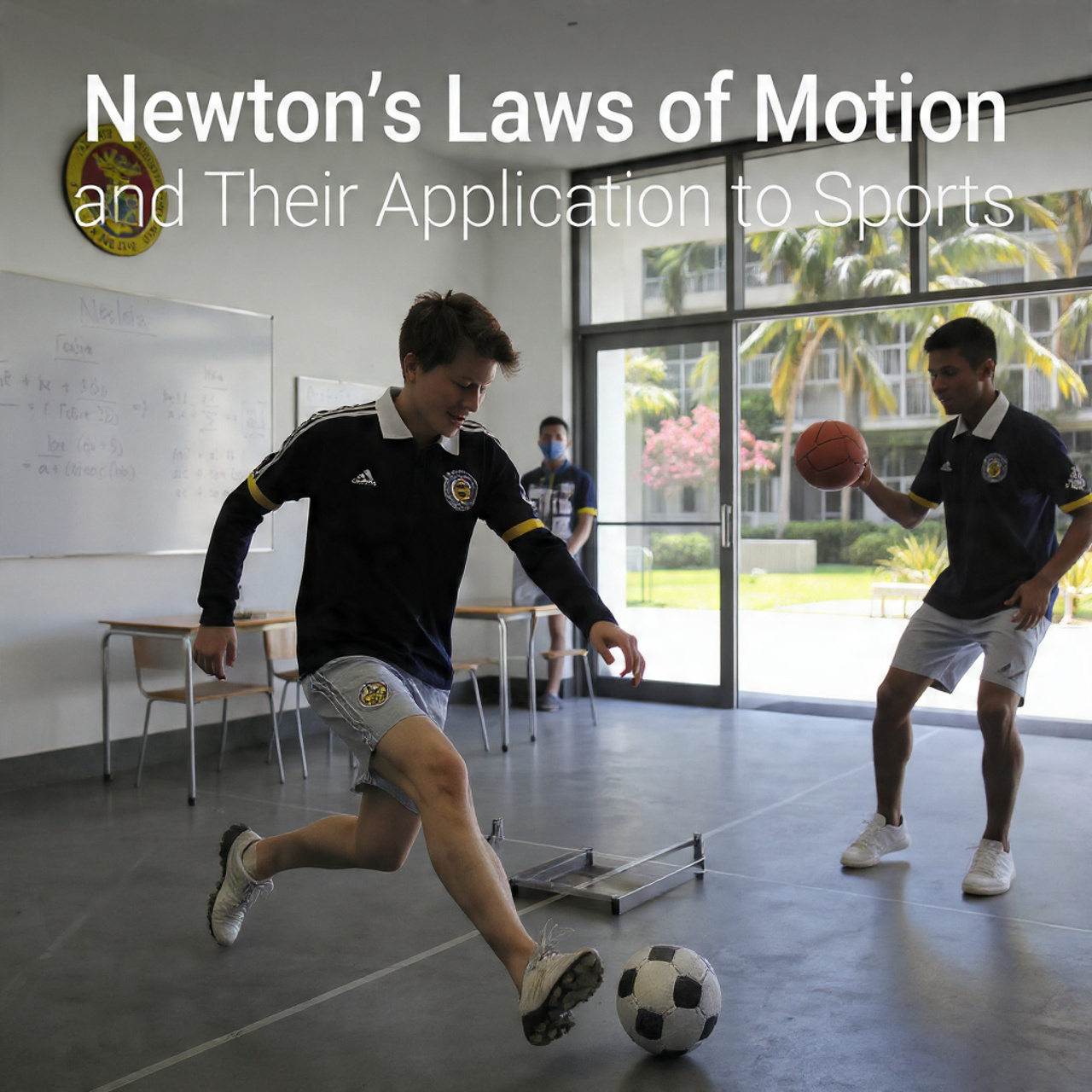How Newton’s Laws of Motion Shape Performance in Sports

Sir Isaac Newton’s discoveries over 300 years ago revolutionized the way we understand the physical world. His three fundamental principles, known as Newton’s Laws of Motion, describe how objects move and interact under forces. While these laws are often studied in classrooms, they are equally powerful in the real world—especially in sports. Athletes, coaches, and sports scientists constantly apply these principles to improve performance, refine techniques, and prevent injuries.
Breaking Down Newton’s 3 Laws of Motion
1. The Law of Inertia (First Law)
The first law states that an object will remain at rest or continue moving at a constant velocity unless acted upon by an external force. In sports, this explains why a stationary soccer ball does not roll until a player kicks it and why a moving football keeps rolling until friction or another force stops it. Understanding this principle helps athletes anticipate motion and react more efficiently.
2. The Law of Acceleration (Second Law)
Newton’s second law describes how an object’s acceleration is determined by the force applied and the object’s mass, summarized in the equation:
F=maF = ma
In practical terms, this law helps athletes understand how the force they exert translates into movement. Sprinters push off the starting blocks with maximum force to achieve rapid acceleration, while rowers use their strength to propel a boat forward. Coaches use this principle to optimize training, ensuring that athletes generate maximum speed with minimum wasted effort.
3. Action and Reaction (Third Law)
The third law states that for every action, there is an equal and opposite reaction. In sports, this can be seen in swimming, where pushing against water propels the swimmer forward, or in basketball, where jumping off the floor relies on the ground’s equal upward force. Recognizing this law allows athletes to manipulate their environment for optimal movement and performance.
Applications in Sports
1. Boosting Performance
By applying Newton’s Laws of Motion, athletes can fine-tune their techniques for better results. A sprinter’s explosive start demonstrates the second law in action, while a high jumper’s takeoff perfectly illustrates the third law. Even seemingly simple movements, like swinging a tennis racket, involve careful calculation of force, direction, and timing.
2. Enhancing Safety
Sports involve significant forces, and safety depends on managing them. The first law helps explain why protective gear such as helmets and pads is crucial—they counteract sudden forces that could cause injury. Similarly, in motorsports, seat belts and safety harnesses prevent drivers from continuing in motion during abrupt stops, demonstrating Newton’s principles in real life.
3. Refining Techniques
Coaches use Newton’s laws to analyze and improve sports techniques. A golfer studying the angle and speed of their swing can apply these laws to maximize ball distance. In football, calculating the force and trajectory of a kicked ball improves accuracy and power. This scientific approach allows athletes to consistently refine skills and gain a competitive edge.
4. Equipment Design
Sports equipment is engineered using these principles. Tennis rackets are designed to transfer maximum force to the ball while reducing vibrations. Running shoes use materials that enhance push-off and absorption, making movement more efficient and reducing injury risk. Manufacturers rely on Newton’s 3 Laws of Motion to create gear that balances performance with safety.
5. Preventing Injuries
Understanding the forces involved in sports helps prevent injuries. Strength training, conditioning, and movement analysis all use Newton’s Laws of Motion to minimize strain. For example, understanding how force is transferred during a jump helps high jumpers and basketball players train muscles in the most effective and safe way.
Real-Life Examples
-
Soccer: A player kicks the ball (action), and the ball exerts an equal force back on the foot (reaction).
-
Basketball: Jumping off the ground uses the third law; the force applied downward pushes the player upward.
-
Swimming: Pushing water backward generates forward motion due to action-reaction forces.
-
Tennis: The angle, speed, and force of the racket determine the ball’s trajectory, demonstrating acceleration principles.
Conclusion
Newton’s Laws of Motion are more than classroom concepts—they are the foundation of athletic performance. By understanding and applying these laws, athletes can move faster, jump higher, and play safer. Coaches and sports scientists use these principles to refine techniques, design equipment, and prevent injuries, making sports not only more competitive but also safer and more enjoyable.
Incorporating Newton’s 3 Laws of Motion into every aspect of sports—from training to gear design—ensures that athletes can achieve their peak potential while minimizing risks. The next time you watch a sprinter explode from the blocks or a basketball player soar for a dunk, remember: Newton’s principles are at work behind every impressive move.




